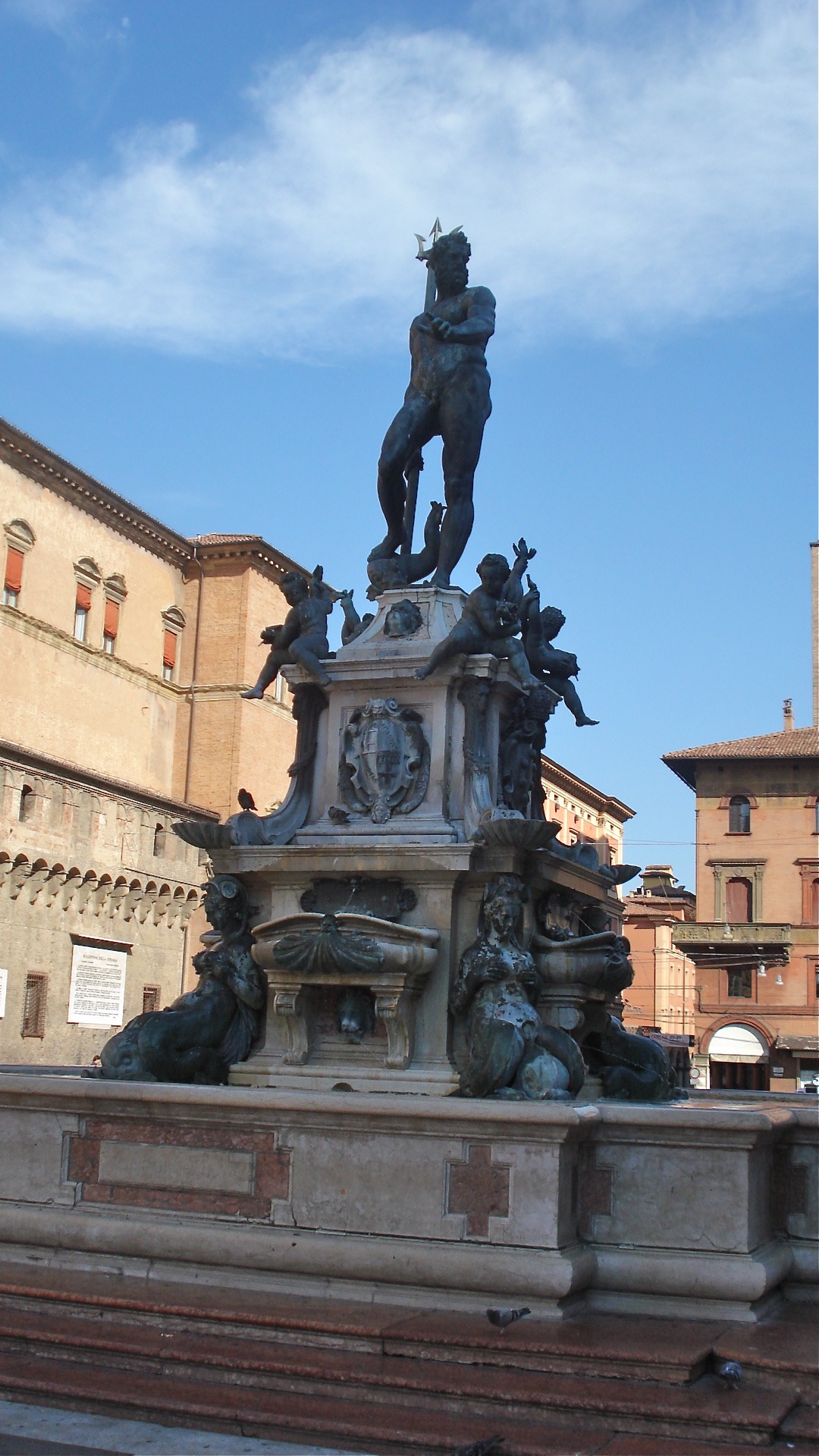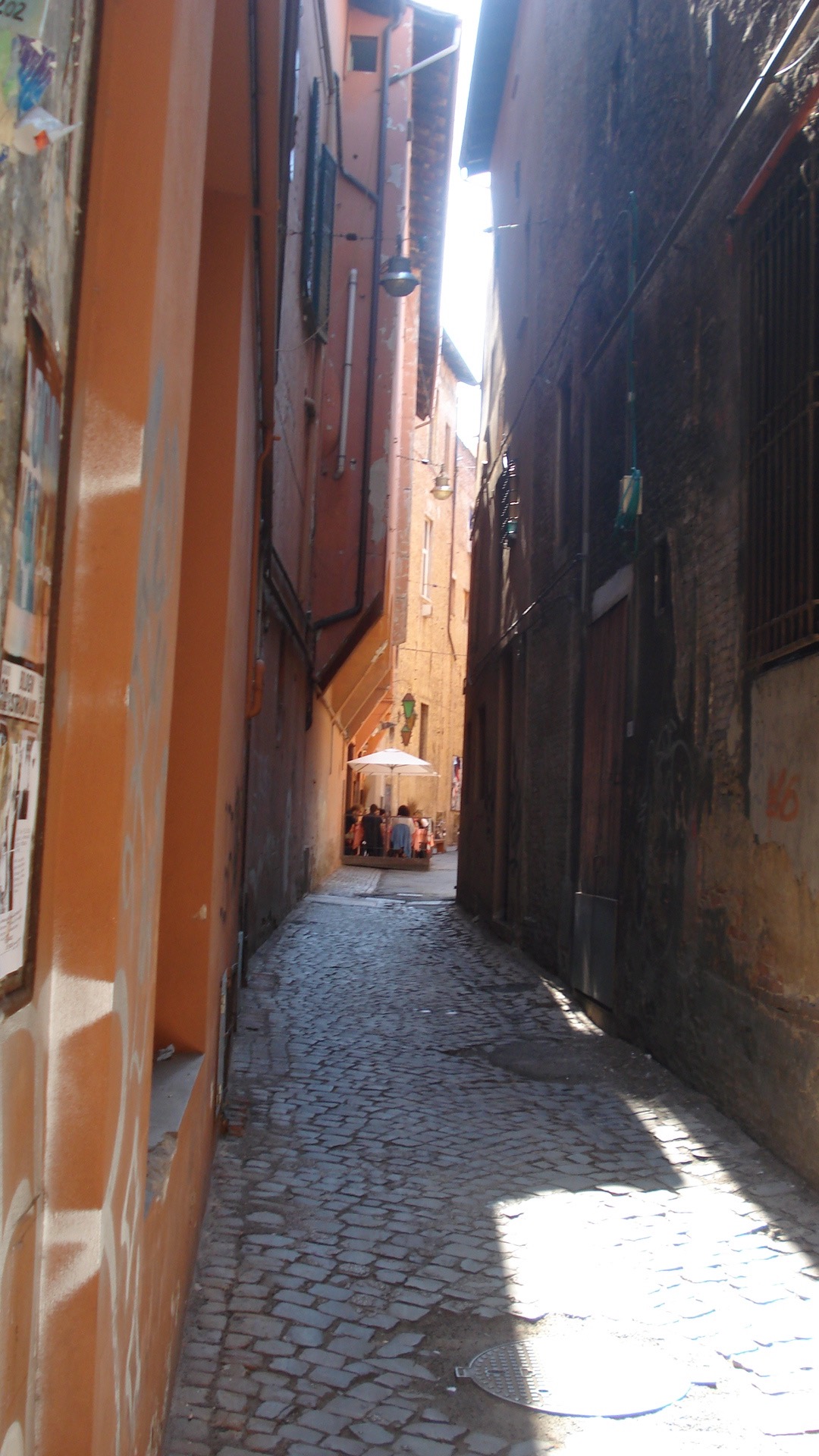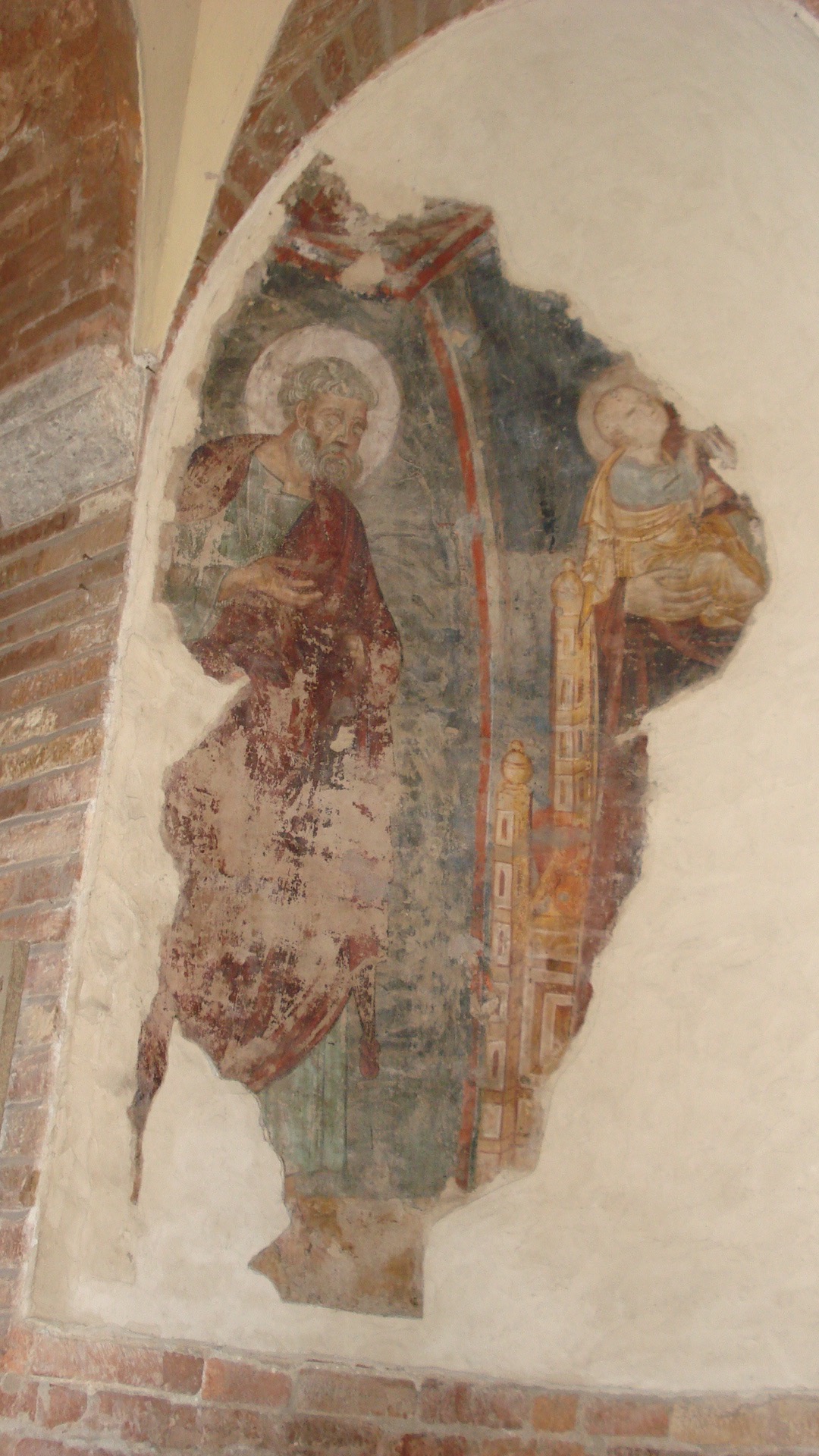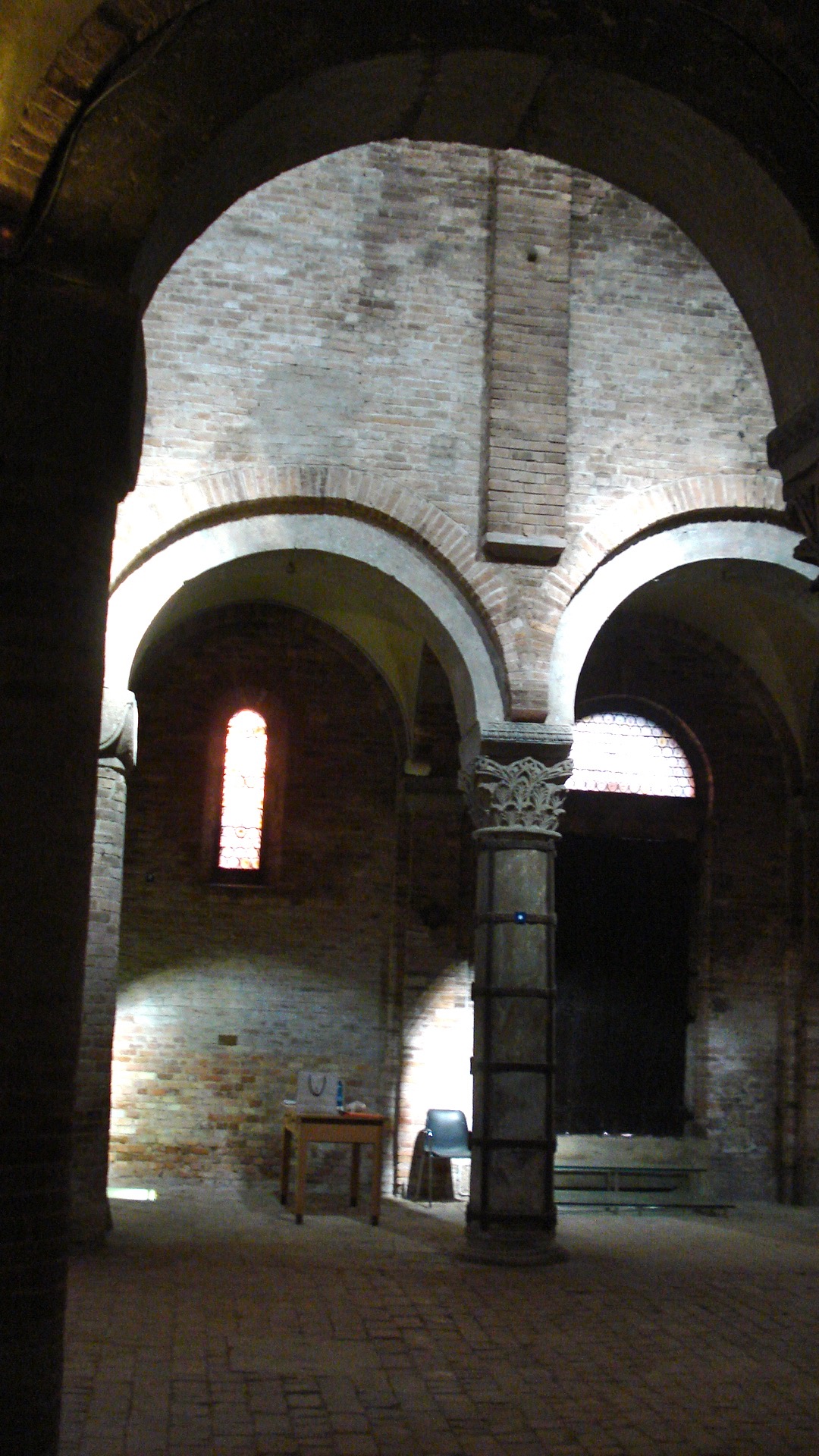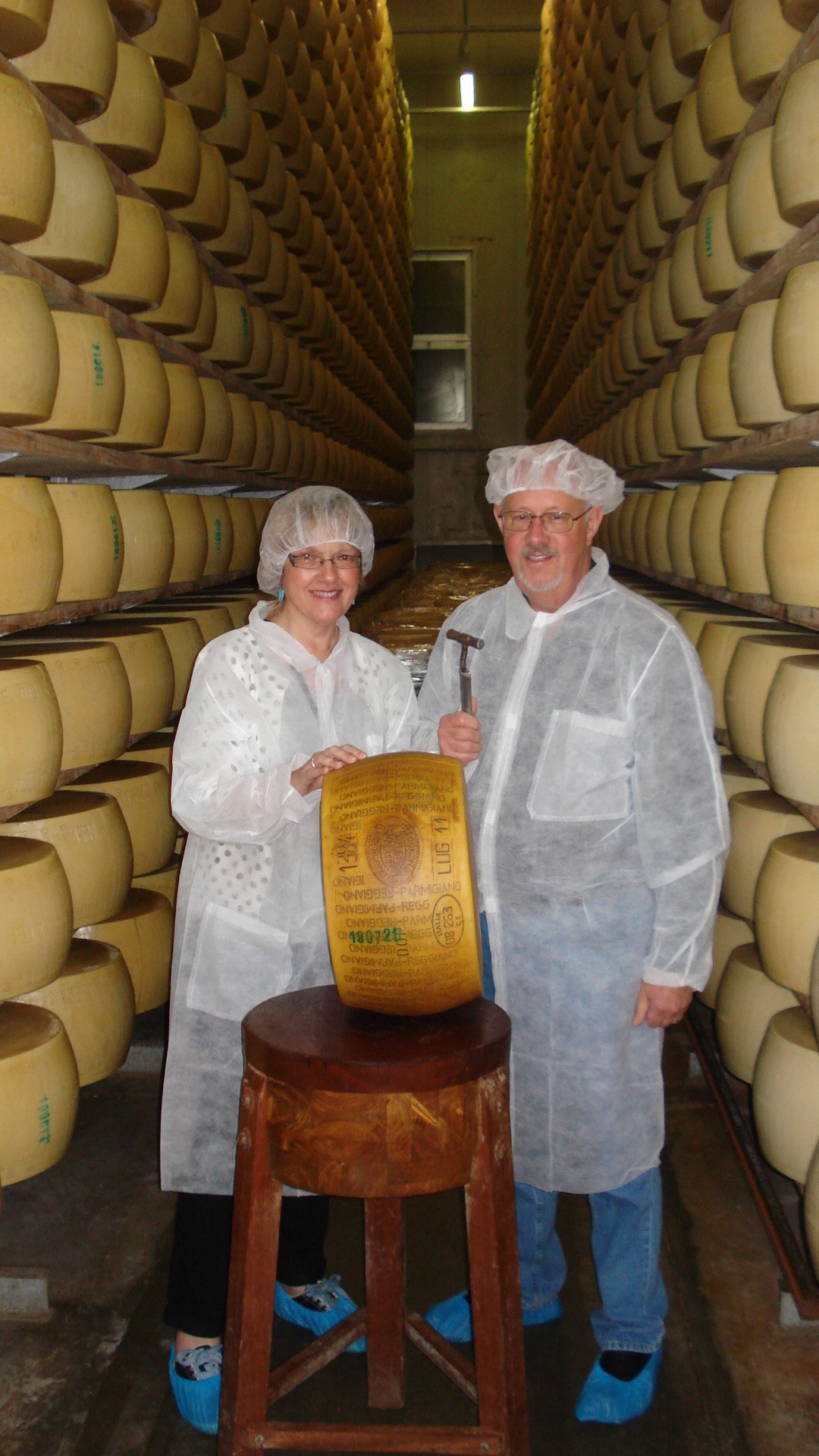Our Trip to Bologna
Our Trip to Bologna
Mick Watson
October 5, 2013
Many of our friends and acquaintances have been to Italy. All of them say they want to go back. Neither Beth nor I had been; so what was wrong with us? Well, we had our chance when we were recently invited to present a paper at the first research conference of the Marconi Institute for Creativity, which is associated with the Marconi Foundation and the University of Bologna and also with the Marconi Society headquartered in San Francisco. We were in Bologna from September 25 to October 2. We took on the role of tourists for the first half of our visit and conference attendees for the second half.
We switched planes in Frankfurt, from a jumbo jet filled primarily with tourists to a small puddle jumper filled with business people. (Let me say that I will fly on Lufthansa whenever I get the chance—wonderful service and efficiency.) Because I am more familiar with Germany, my first impression of Italy comes as a comparison of the two countries. The Frankfurt airport was modern and clean, and the announcements and flights were precise. The Bologna airport was somewhat dirty, trashy, and the first restrooms I frequented were out of order. Outside the terminal the streets were torn up, signs were lacking, and stinky cigarette smoke wafted in from all directions. Germany-Italy? Now you may think that I am complaining and already have a negative view of Italy, but let me explain. Despite the criticisms I just rendered, upon exiting the airport, the first car I saw was a most beautiful Maserati that made my heart go thumpity-thump. And with so many folks speaking Italian it sounded like poetry, like music. When I was much younger, I knew a boy who was a nice kid, but he was always impeccably dressed and had his hair combed so perfectly that never a hair was out of place. Never a sentence left his mouth that wasn’t precise, polite, and intelligent. I didn’t ever want to hurt him, but sometimes I had this urge to simply walk over to him, mess up his hair and say, “Loosen up.” That kid was Germany; my messy, sloppy friends back then were Italy. As I left the Bologna airport, there was something more than the messiness and looseness—a joy and thrill of existence. I liked it from the beginning.
Speaking of Maseratis, I think it is significant that Maserati, Lamborghini, and Ferrari automobiles, arguably the most beautiful cars ever built (if you don’t believe me look up their images on Google), are all manufactured in the area around Bologna. And so, to complete my comparison, it would seem to me that the greatest car on earth would be one precisely engineered and built by the Germans but designed by the Italians. That is the comparison.
The City
Our hotel, the Grand Hotel Majestic, right in the center of the city on Via Indipendenza, was indeed grand. The restaurants, the stairways, our room all included ornate furniture and lamps and of course the ubiquitous paintings that covered everything—an accurate introduction to Bologna. We wasted no time but immediately headed out to explore the city. People (but fortunately not too many American tourists) crowded the town center, most of them beautiful, some of them funky. Because of the university, this city is known to have a rather young population who espouse a range of left-leaning ideas and politics. It did seem like college students ruled the streets.
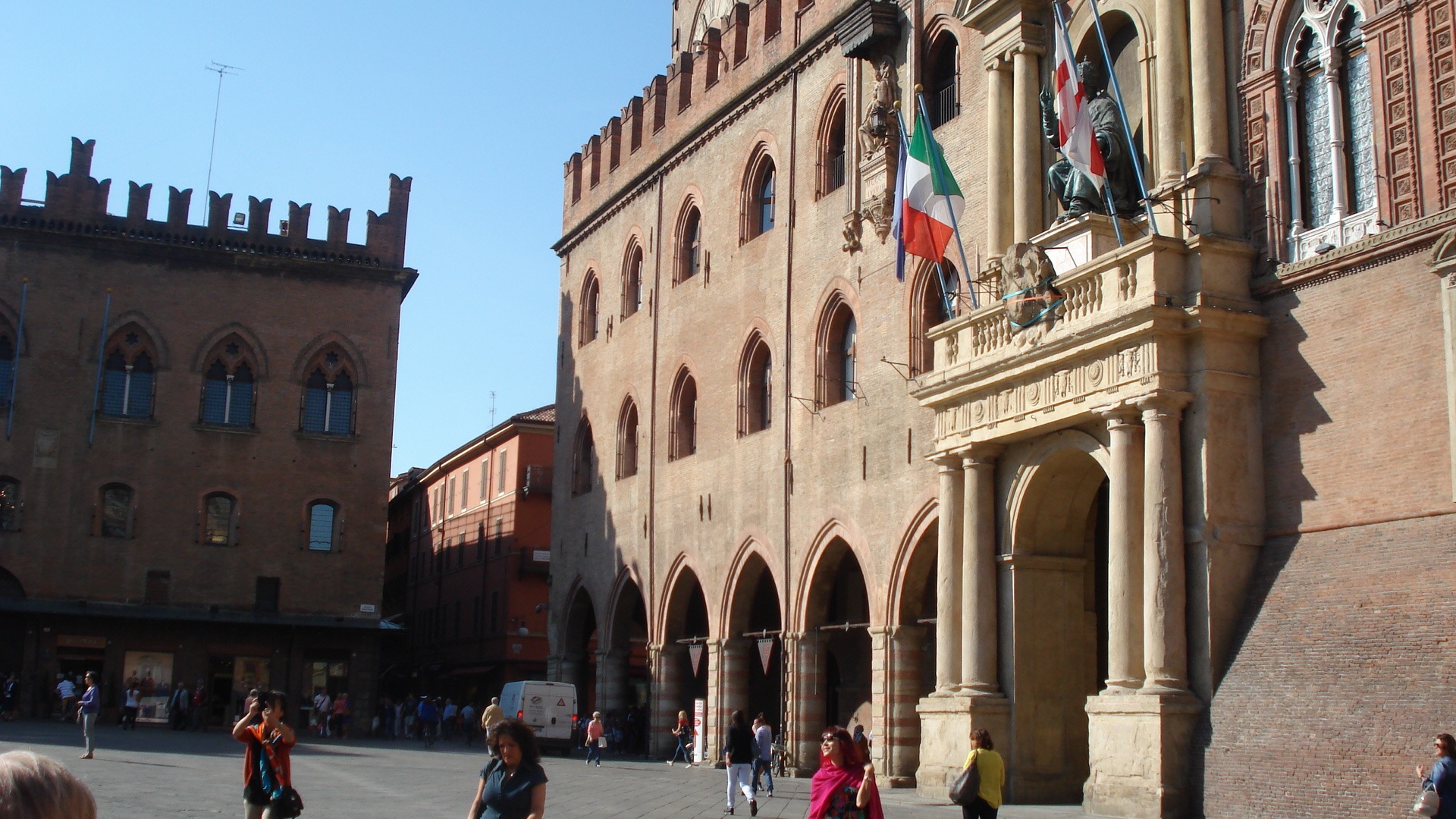
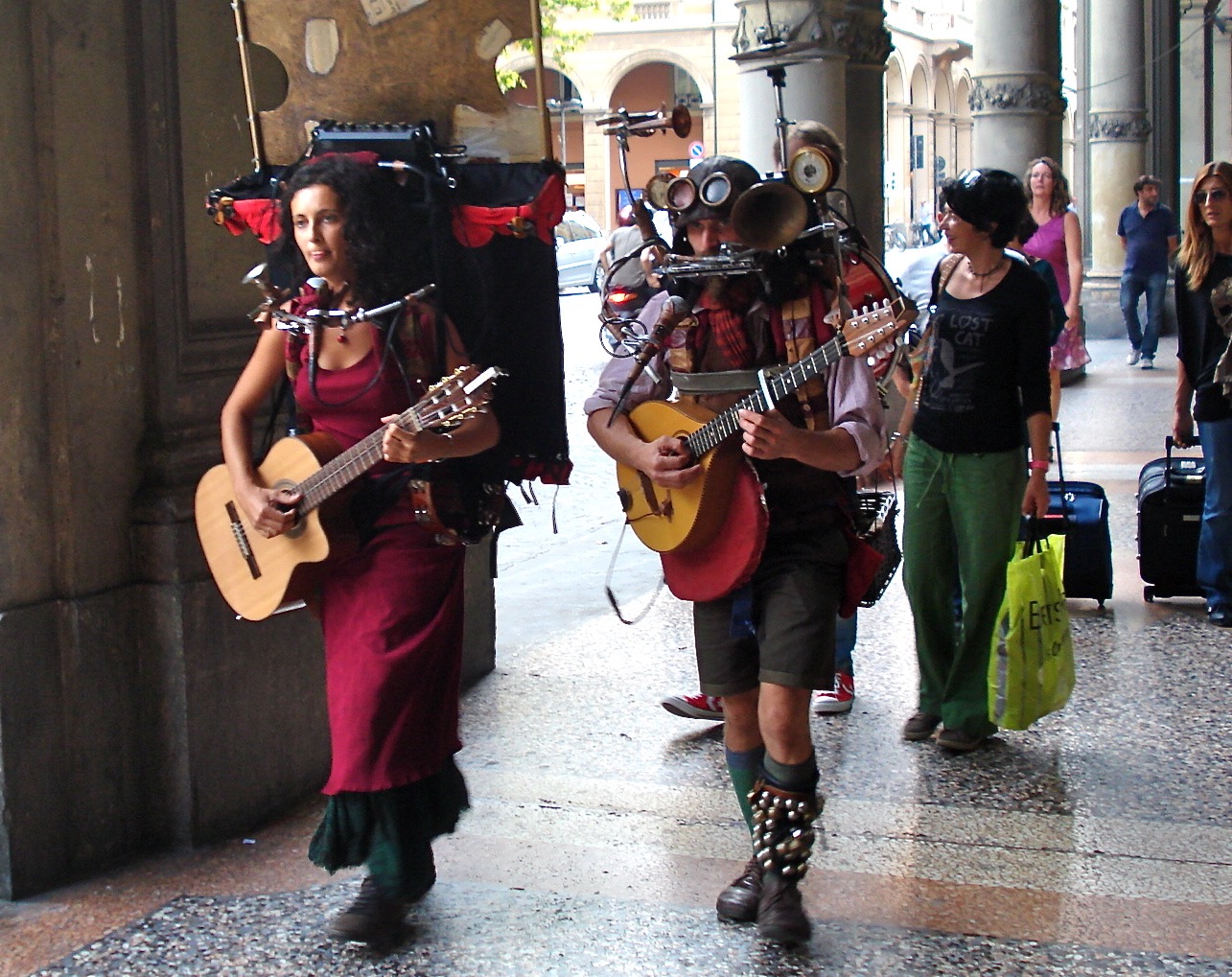
And now I must confess to a secret love of mine: I am drawn to small, narrow streets and alleys, especially if they are paved with cobblestones. I believe it goes along with my love of caves and tunnels. In any case, Bologna is nothing if it isn’t a complex of densely packed, narrow streets, with almost no asphalt or concrete in sight. Instead, virtually all the streets and sidewalks are of cobblestones or blocks of stone. The buildings are of brick or covered in brown, beige or orange stucco, and the roofs are of red tile. This is not an area of thick forests, but an area with an abundance of stone and clay. They used what they had; so I think you could say that no trees were sacrificed in the building of their city. Almost every street had arched, porticos (terracotta arcades) covering the sidewalks (miles and miles of them). Under these porticos the walks were usually made of a mosaic of tiles of varying colors. The story goes that in some earlier period the university did not have enough living space for its students, and so more porticoes were constructed on the streets and the students camped out and lived under them.

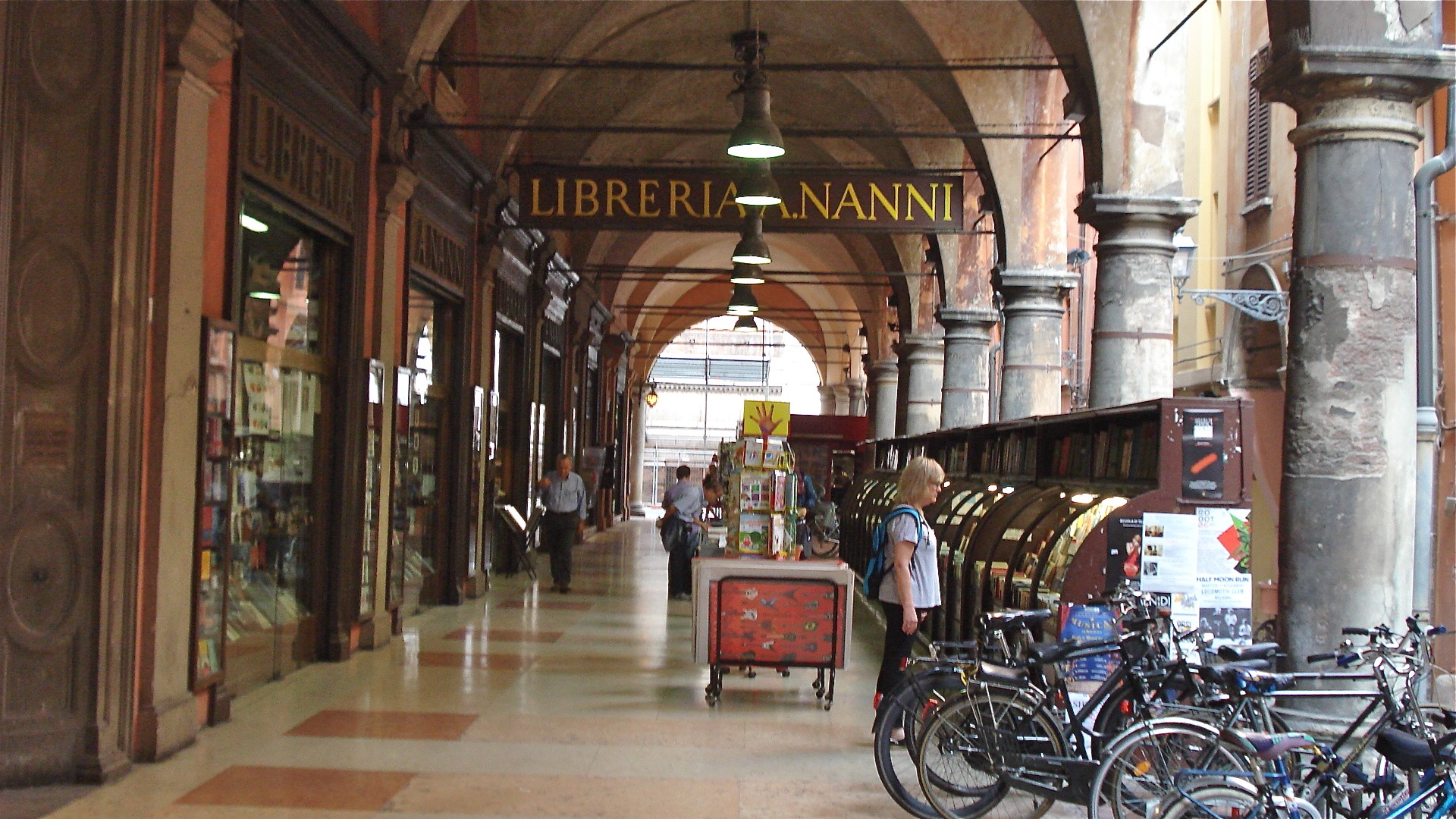
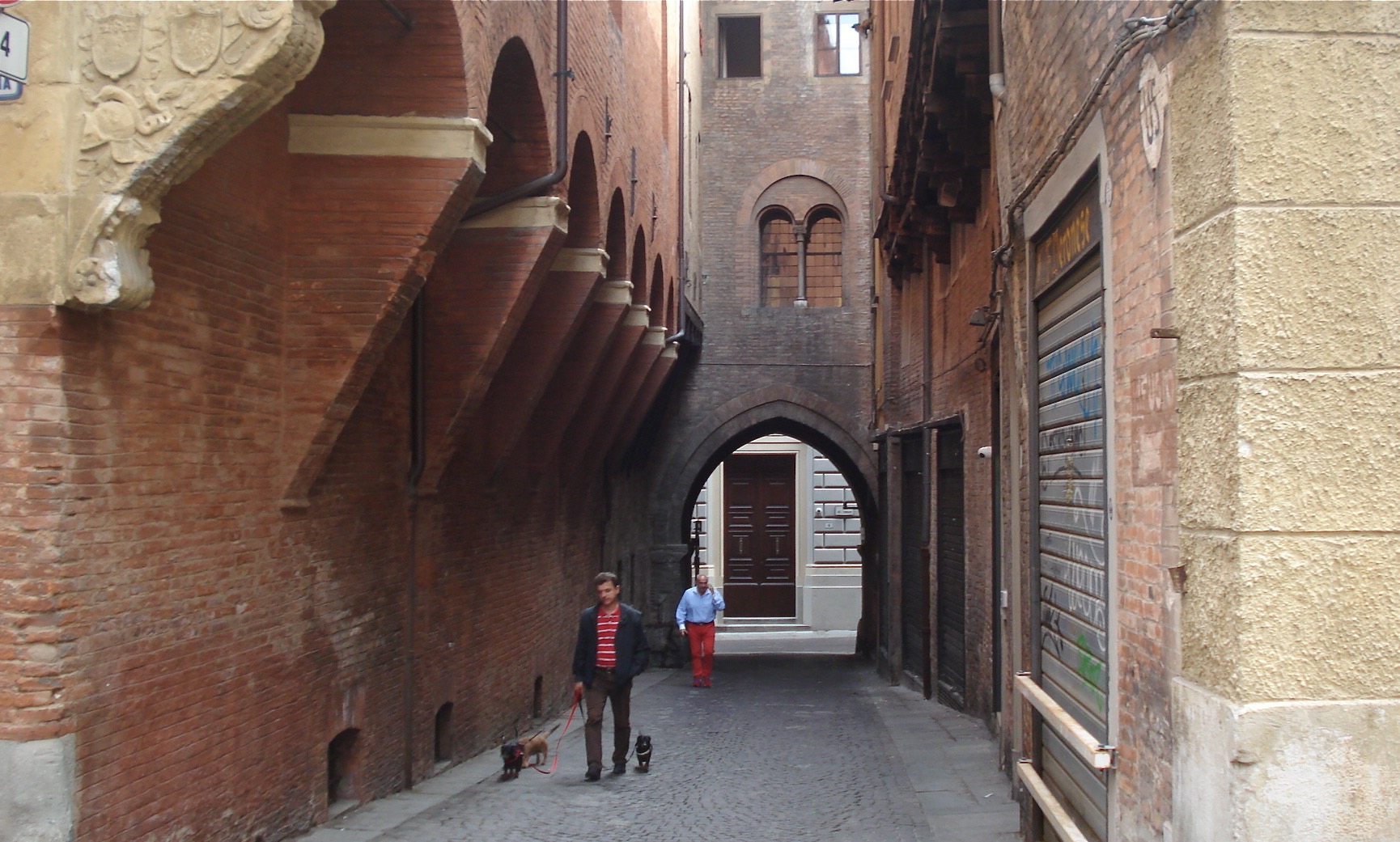
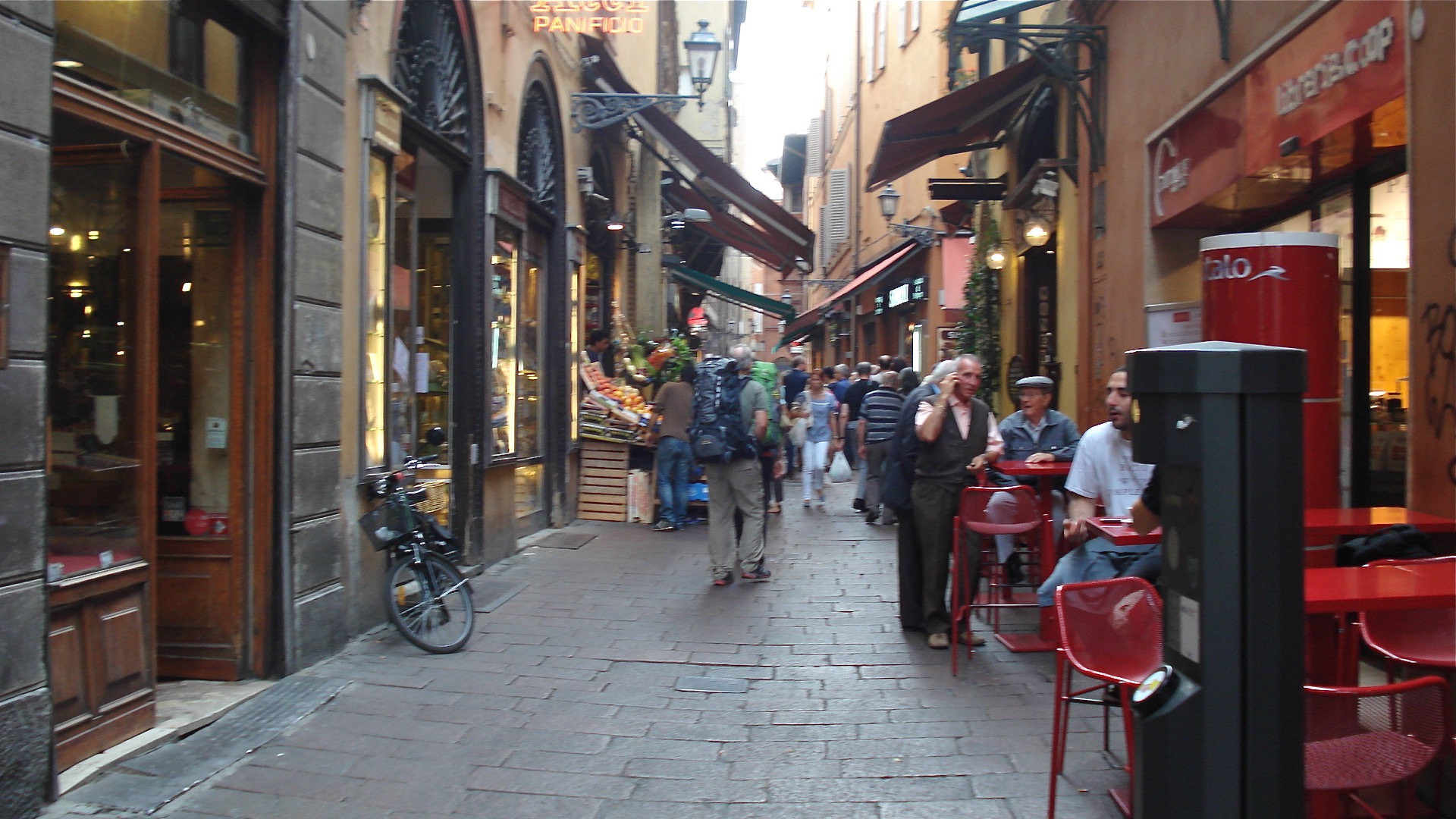
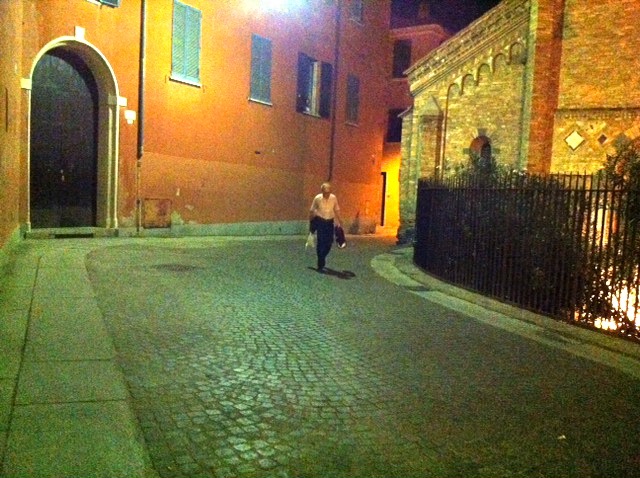

In the following picture, it looks like Beth has been naughty and is spending time in the corner in Time Out. Although Beth sometimes deserves Time Out, in this particular case she was part of a secret ritual (well, not really so secret). One particular confluence of porticoes formed a square with high arched ceilings. By watching others, we discovered that this particular construction had created a fortuitous and cool auditory effect. If one person stood in one corner facing the wall and another person stood in the diagonal corner also facing the wall, one person could whisper a message ever so softly to the wall and the other person could hear it distinctly as if a voice were speaking in her head. What was fun was watching unsuspecting people who happened upon those who knew the secret. The newcomers looked at them like they were crazy, standing in the corner like that. Of course these onlookers could not hear the whisperings, but they would then try it and discover the ancient secret of this ritual. Perhaps Guglielmo Marconi, who was born and lived in Bologna, was first inspired to develop wireless communication by standing in this very portico. It could be.
Although the outsides of the buildings were usually plain, the insides (at least all that we saw) followed the Italian tradition of being decorated with art on every square foot of available space—walls and ceilings. The inside walls of churches and even drab government offices hosted never-ending art. I loved the old paintings that were often done in the plaster, some of them faded with age, some of them worn away, but all space covered. (I need to correct myself. The outsides of the buildings actually did have a great deal of sculpture and decorative friezes.) That style of ornate art has not been my favorite, but it grew on me. If you want clutter and over-the-top indulgence in your art, go to Italy. If you want minimalism, stick with Scandinavia.
We visited only one art museum—at the Palazzo Fava—to see the life sized sculptures of Arturo Martini. He completed most of his work in the 1940s. His sculpted people were an amalgam of older style sculpture and modernist sculpture. But the amazing thing was that they were all in terracotta—all sculpted of clay and fired with hollow centers. I think how fragile they must be. Beth and I loved them.
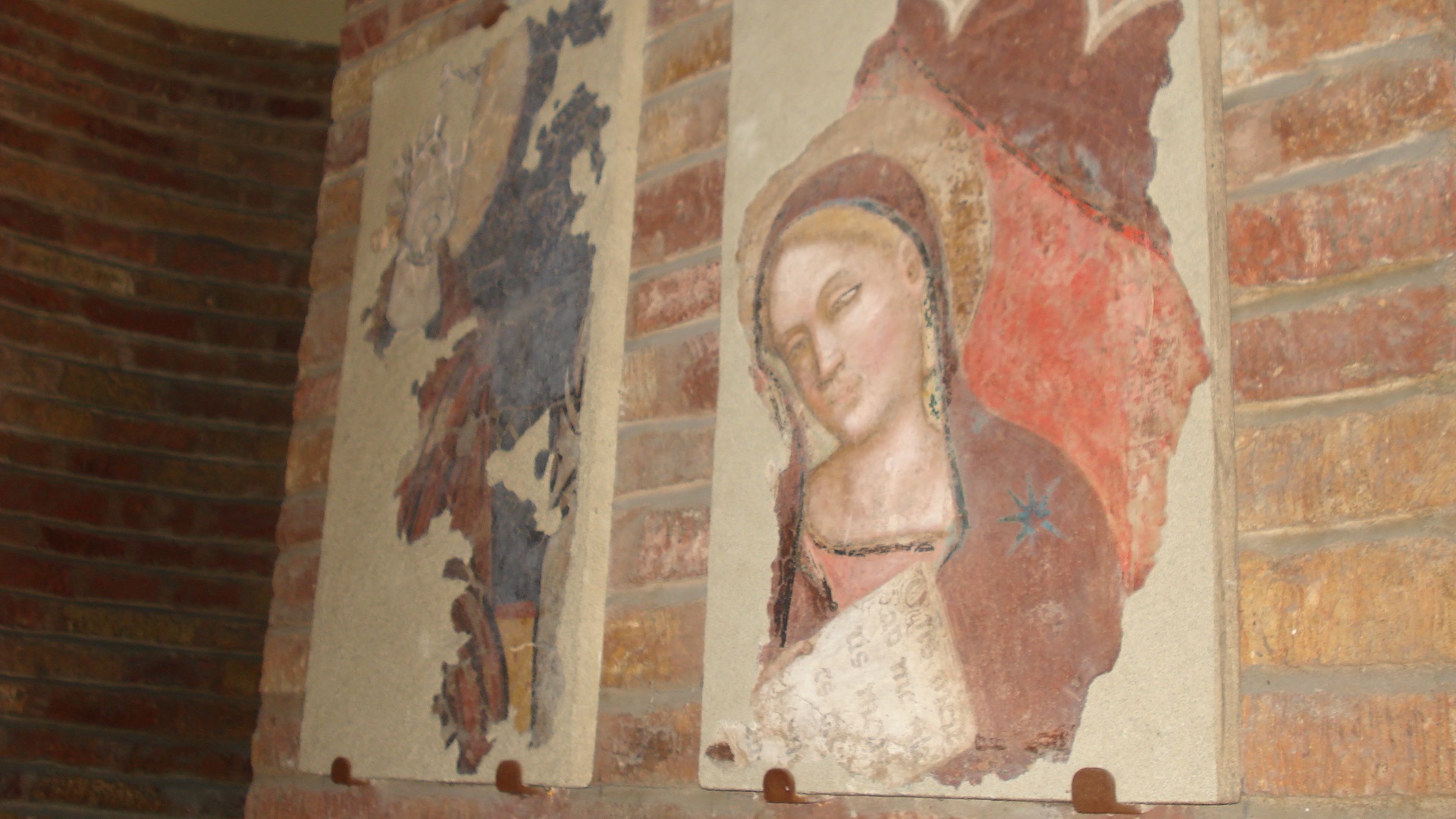
And towers. The Italians of old were into building them. However, they did have a habit of building towers that would sink on one side and lean. The leaning Tower of Pisa is not alone. In the hub of Bologna, with the main spokes of the street layout leading into the central plaza, at the focal point are two towers, the Asinelli and the Garisenda, probably the tallest in the city, each built by a prominent family in earlier days. One leans about three meters in one direction, and the other leans about two meters in the other direction. Everybody seems to love this embodiment of what I am trying to express about Italian exuberance, even if is a little on the messy side.
We also visited several of the many churches. I was surprised at how plain and unadorned they usually were on the outside, often being just an entrance on a block of connected buildings. But inside! Well, I have already told you about the excessive art. The most interesting of these churches—Santo Stefano—is actually a complex of seven churches, each built in the same complex in a different era. The first one was built around a spring and was apparently part of an Egyptian community worshipping Isis. In the 400s, some people discovered that the first two Christian martyrs in that area were buried there, and the first Christian church was built (now under some of the others). Over the centuries, newer churches were built or added to the old ones, while the original spring in the center courtyard still puts out clear water.
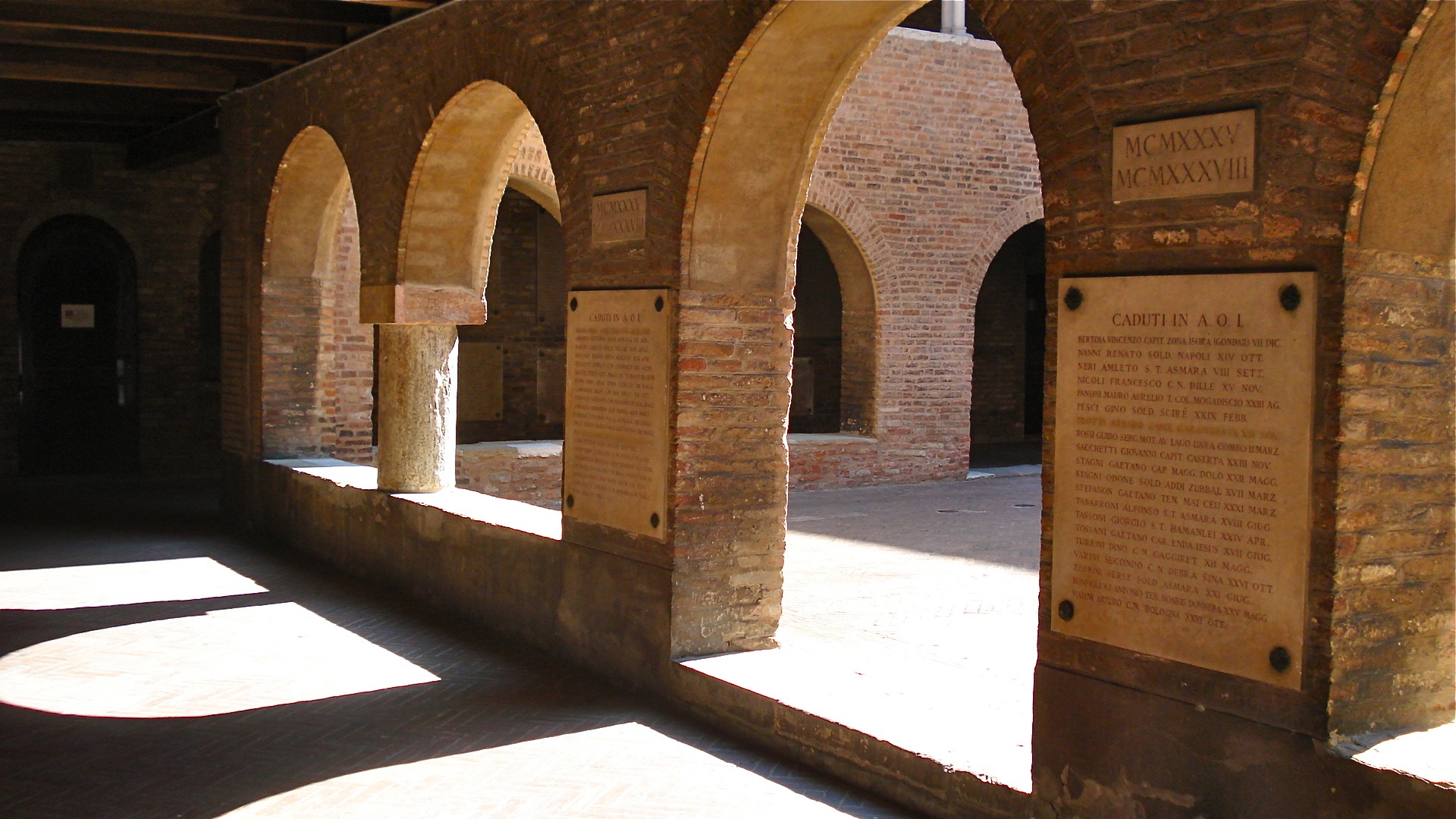
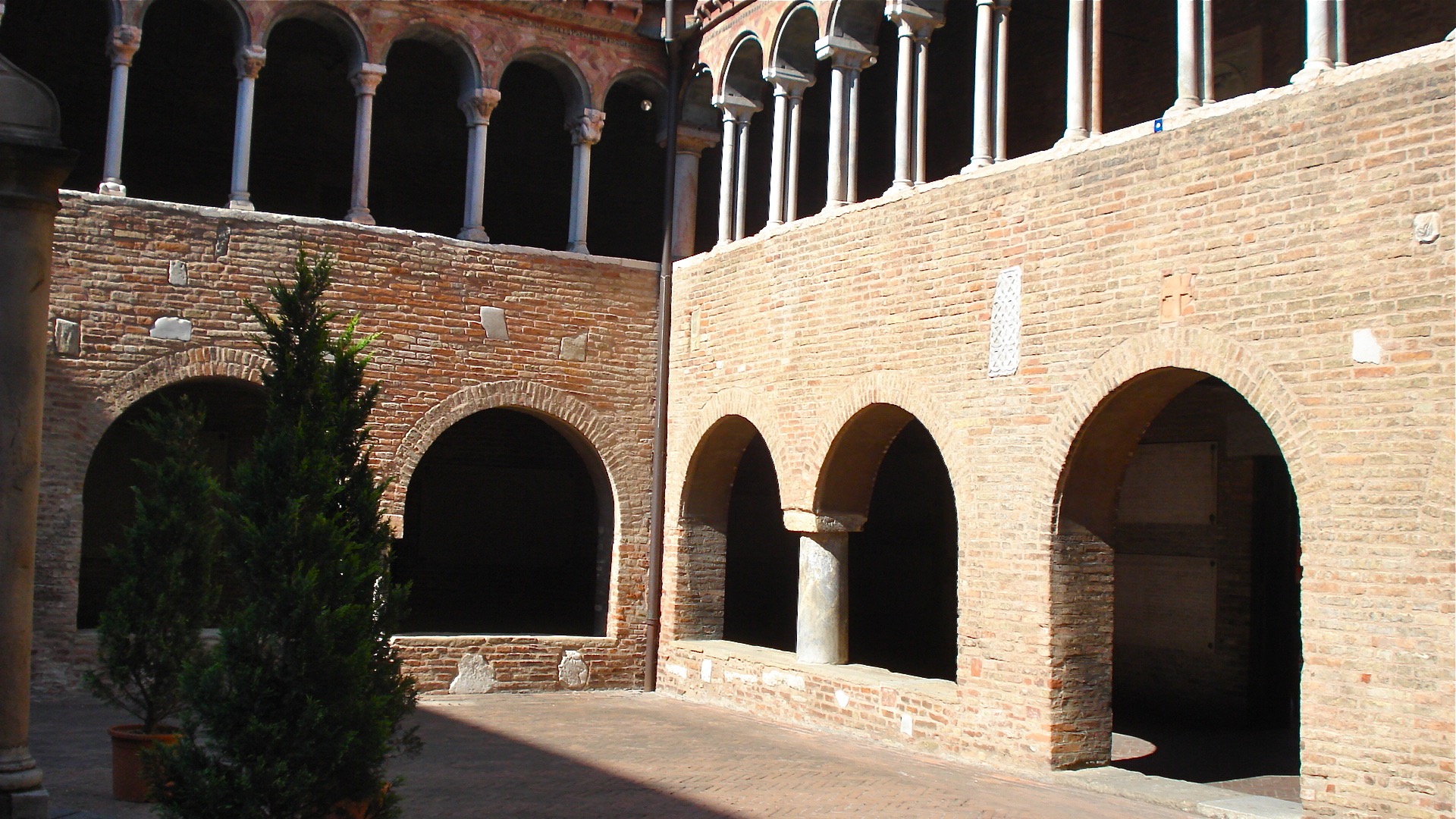
Because of course we are academically inclined, we visited the University of Bologna, a rag-tag complex of old buildings, with droves of rag-tag but vibrant students gathering in the alleys and plazas that are intertwined with the university buildings. We discovered that the University of Bologna is the oldest continuously functioning university in the western world, founded in 1088. Now that’s old, 860 years older than Brandeis University, founded in 1948. I got to wondering what the first class must have been like back in 1088. Probably some nutty monk got a few “students” to come up to his attic and read the epistles of Paul together and then afterwards try to make gold out of dirt. But you have to start somewhere. I wonder if there are still schools somewhere that in essence are following the same curriculum as back then---perhaps at Murray’s House of Learning.
One evening we noticed that a rock band was warming up and doing sound checks on a huge stage in the center of the Piazza Maggiore, near the Neptune fountain. We sat on some steps nearby, eating gelato, and listened for about an hour. If the Pink Floyd touring bus were to collide with the Andrew Lloyd Webber touring bus, this is the band that you would get. Think “The Dark Side of the Moon” and “The Wall” meet “Jesus Christ Superstar” and “Evita.” I know that it is hard to imagine, but we loved it. So later that evening when the piazza was packed and the real concert was under way, we came back to listen. Now, they had added the touring bus from “Up with People,” and the result was quite tacky—one bus crash too many. We learned that this was a religious revival and was comprised of many testimonies in Italian. So we didn’t wait for the Pope’s televised message but went back to our hotel. Yet, I wish I could get a recording of the back-up band as they were warming up and jamming earlier in the evening.
The Food
You may have noticed that I have said nothing about Bolognese cuisine. I can’t hold off any longer. Bologna is called the food capitol of Italy; I think that makes it the food capitol of the world. Bologna supposedly invented lasagna and tortellini and mortadella (elsewhere known simply as bologna) and parmesan cheese (from a neighboring area) and prosciutto and ragu and tagliatelle and of course, bolognese sauce. Much of the traditional cuisine comes from the surrounding area known as Emilia Romagna. Some areas of Bologna are filled with shops and outdoor stands that sell all this food as well as fish, fruits and vegetables.
Small cafes popped up everywhere in the narrow streets, most with alfresco dining in front, making driving on the streets virtually impossible. When it came to meals, we experienced an embarrassment of riches. We did not have a bad meal in Bologna. Every morning for breakfast at our hotel, I had salami, parmesan and other cheeses, mortadella, and the melt-in-your mouth prosciutto reggiano—the best ever and only from that region. After about two days, I dropped having bread and just went for the meat and cheese. We ate one meal at the restaurant in the basement of our hotel—a renovated seminary room from the 14th century, with a ceiling painted in the 16th century by the Carracci brothers. We ate our last dinner at the Marconi Society Award Ceremony at the Palazzo Albergati, a huge 17th century country mansion with a plain exterior but an over-the-top Baroque-style interior. We had superb gelati many times. One meal at a small sidewalk café made us feel like we were in the Italian café scene in the Disney movie, “Lady and the Tramp.” I could picture us eating together under the moonlight, with soft music wafting in from somewhere. However, we were eating tortellini rather than spaghetti; so it wasn’t precisely Lady and the Tramp. (You have to have seen the movie to know what I am talking about.)
But Beth and I agreed that the best meal we had was on our first night. We found a small café called Ristorante Grassilli on a narrow street called Via dal Lazzo, near the churches of Santo Stefano. The café was started by an opera singer and apparently originally was frequented by musicians, opera singers and their groupies. Pictures on the walls featured these singers, such as Pavorotti, who was born in Modena, next to Bologna, but with a special place of veneration for a picture of Giuseppe Verde. We had every course available and stayed there from 8:00 p.m. until almost midnight. I believe the chef cooked each meal separately and, although the wait for each course was long, we felt relaxed and thoroughly enjoyed the evening. The taste of that meal goes down permanently in my long-term memory.
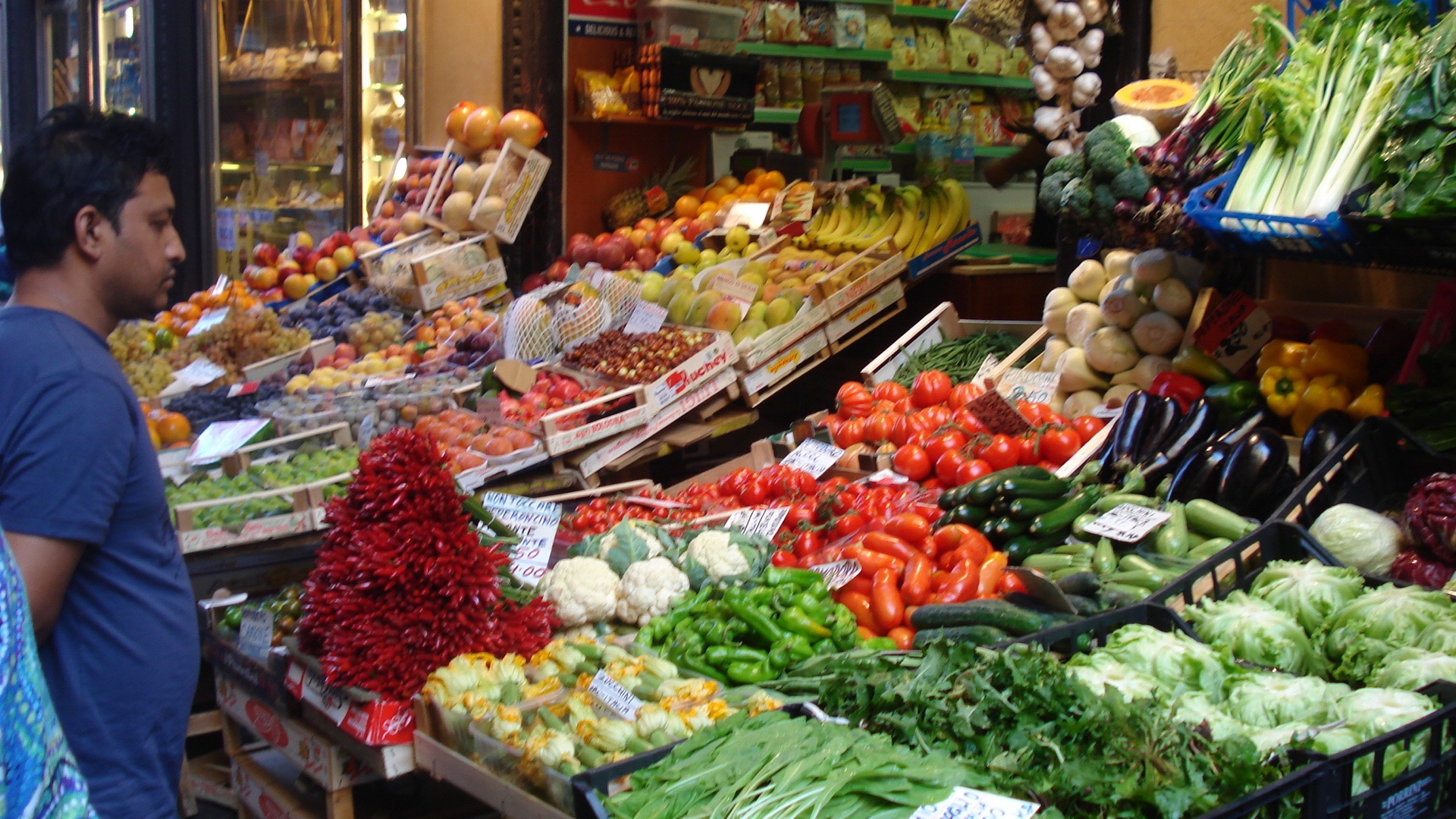
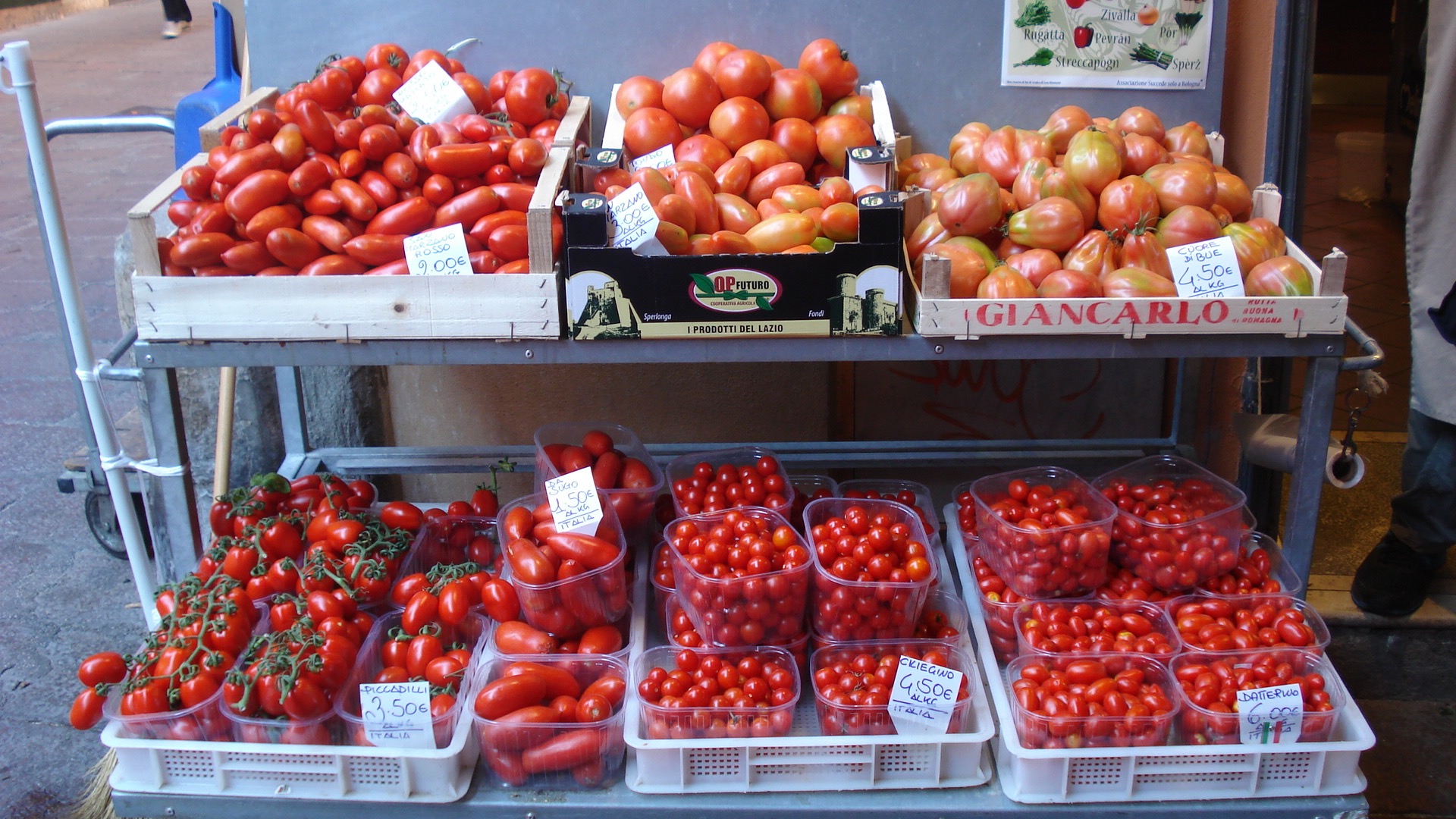
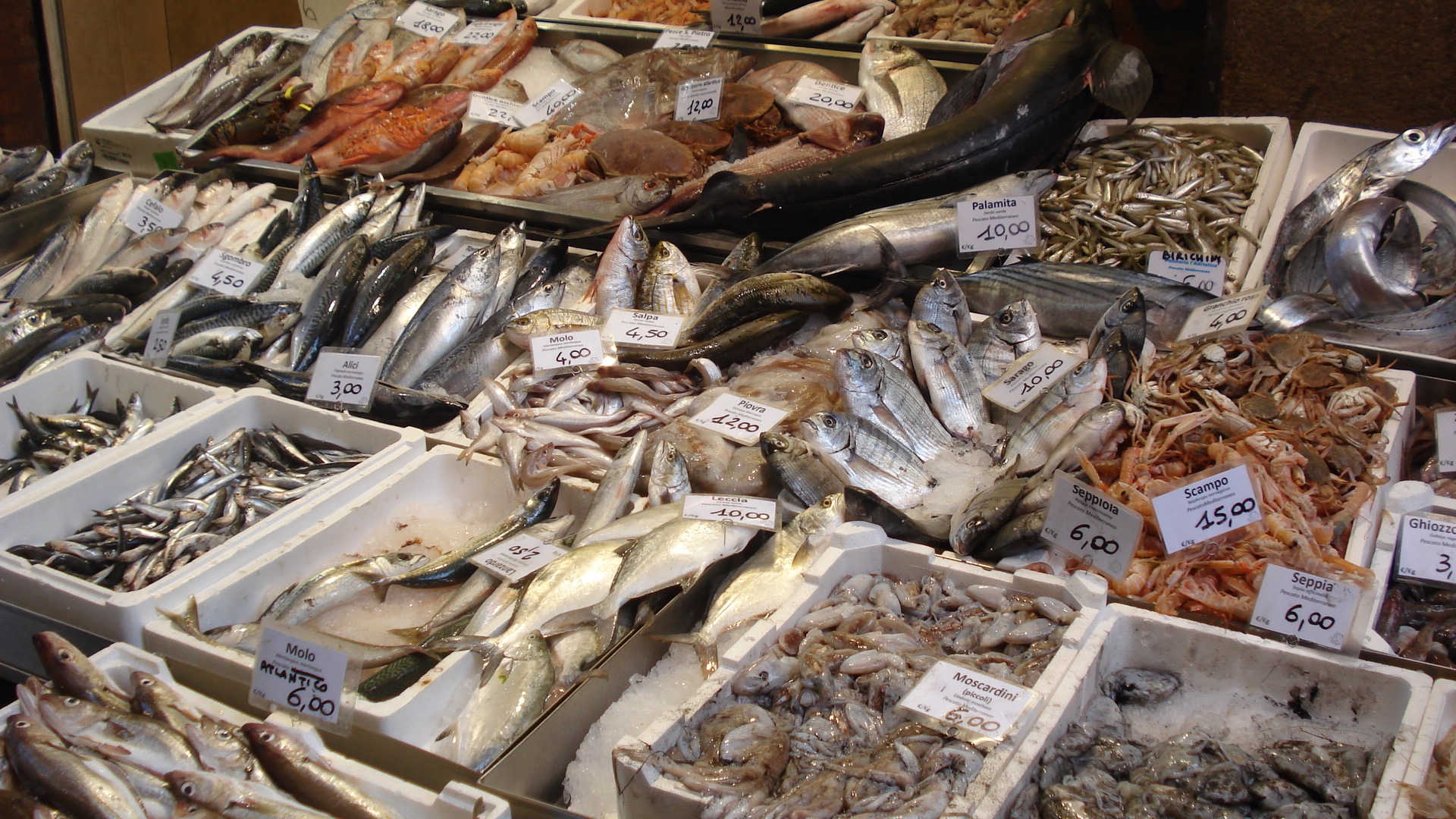
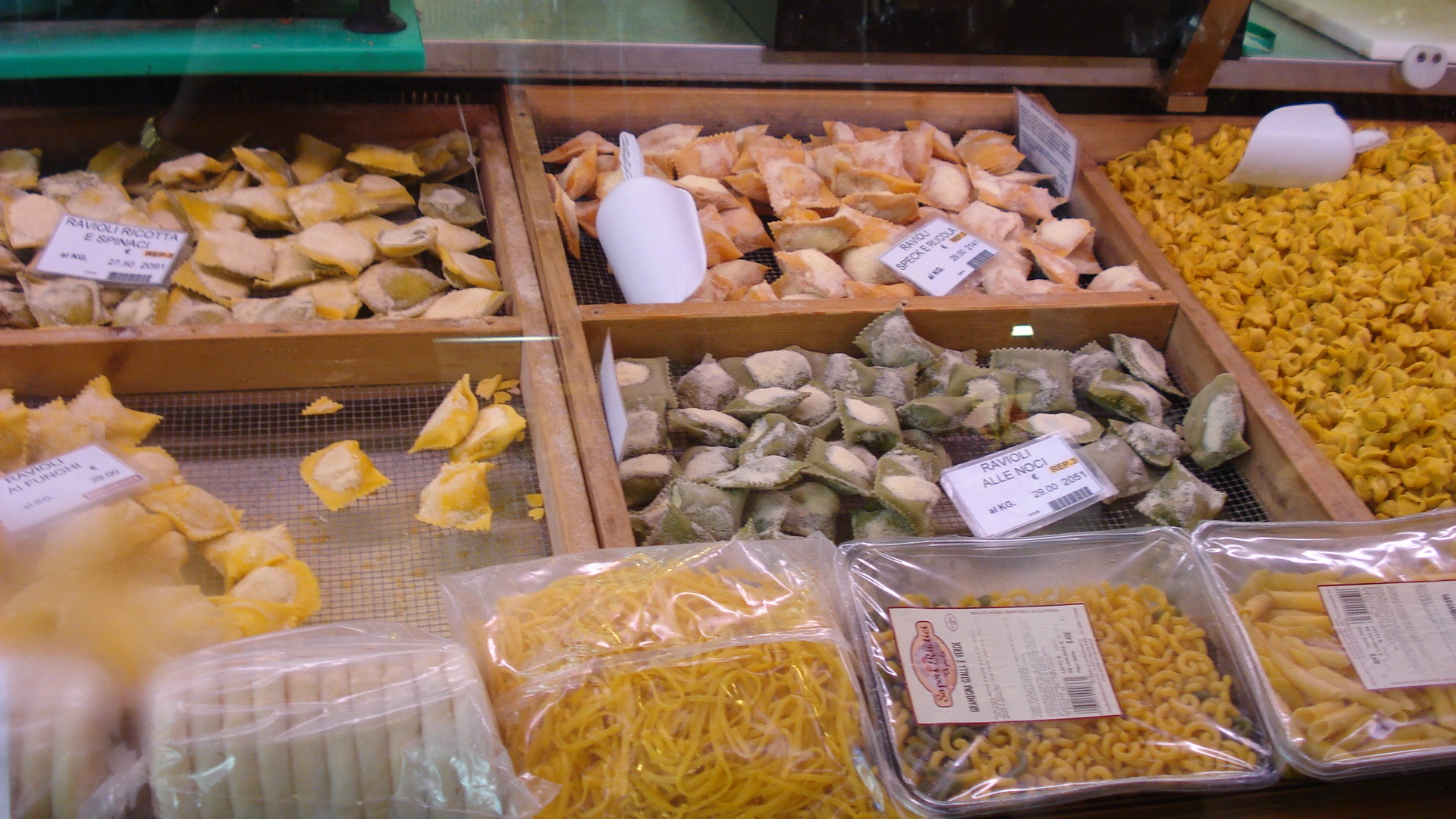
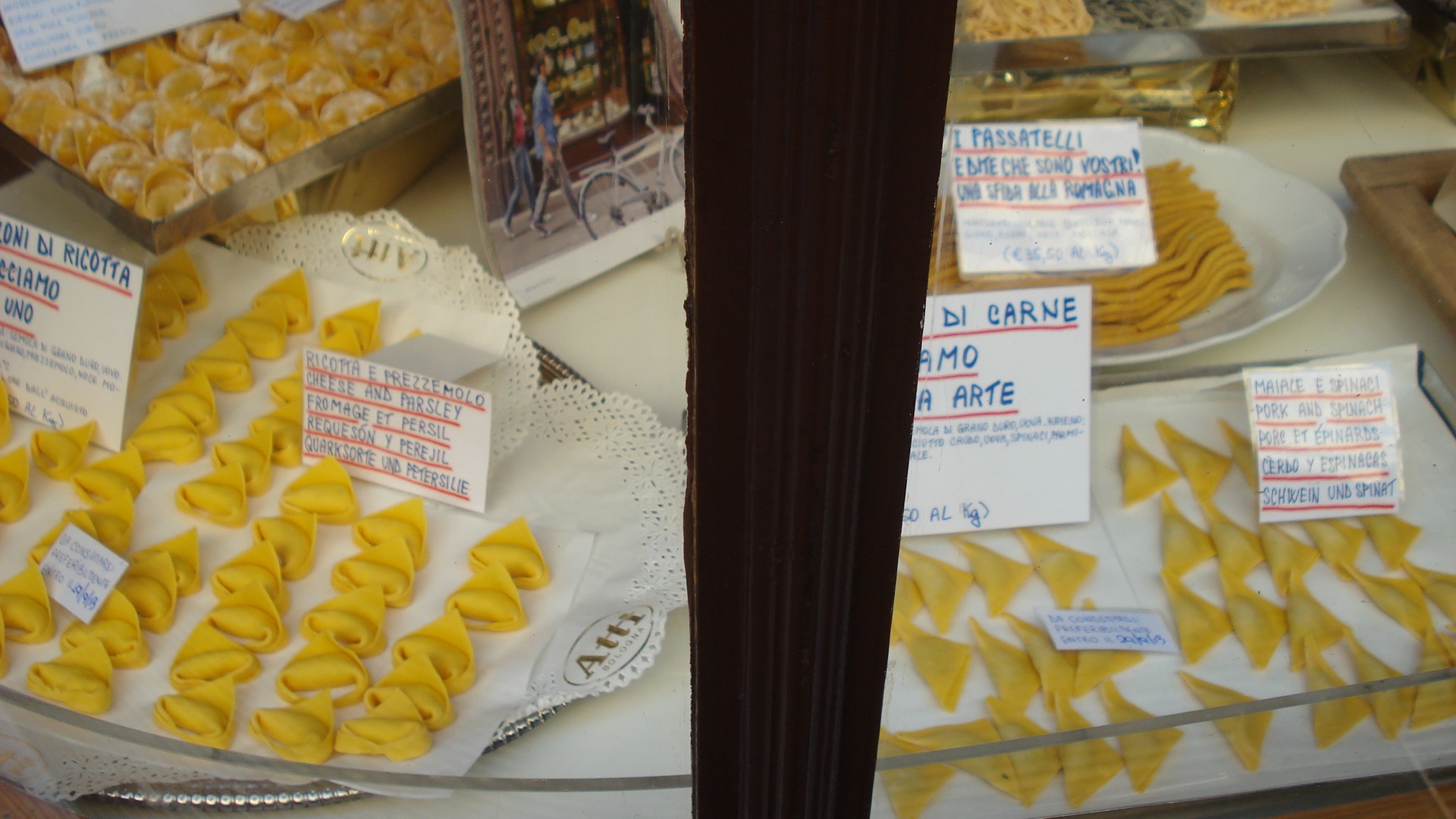
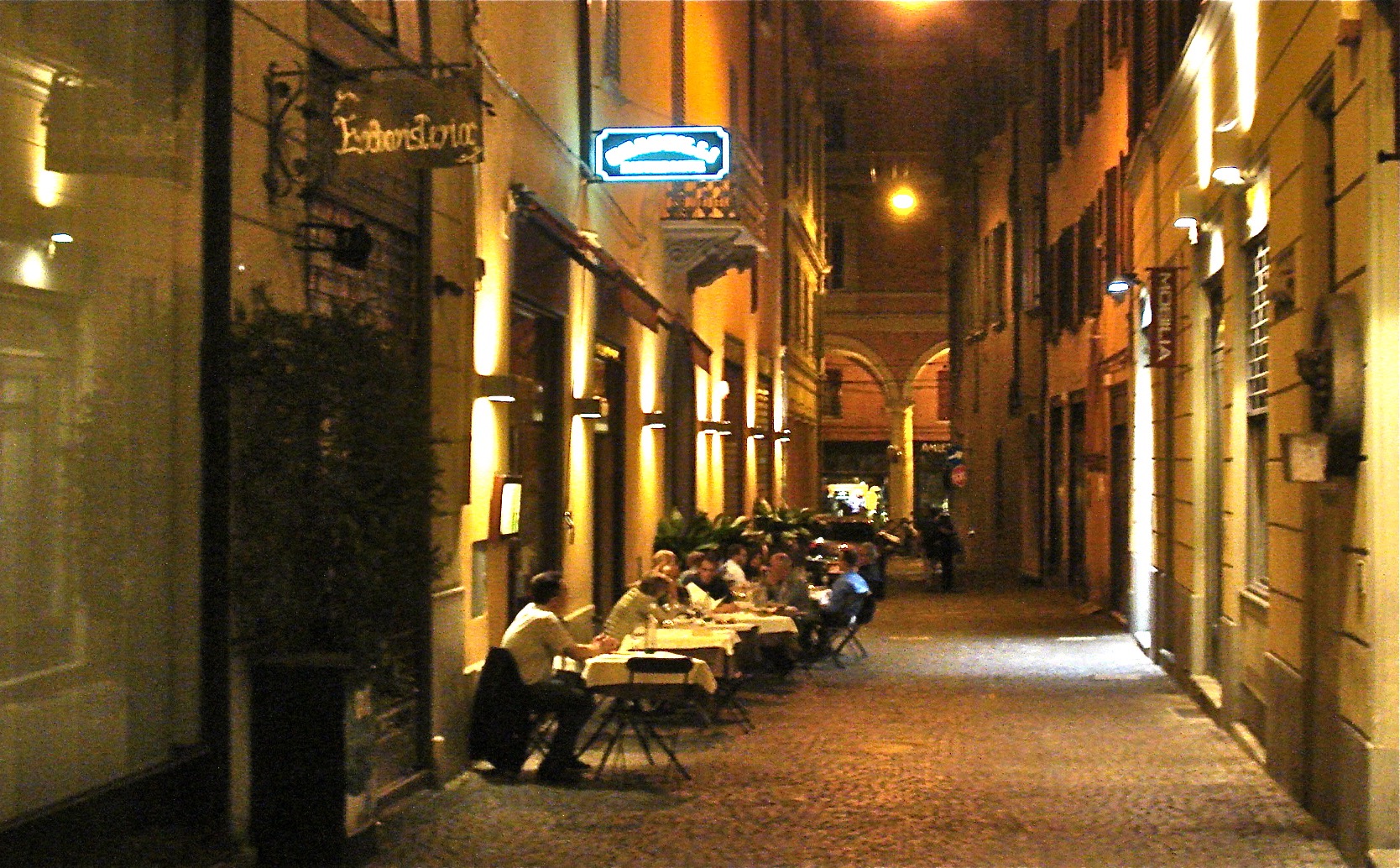
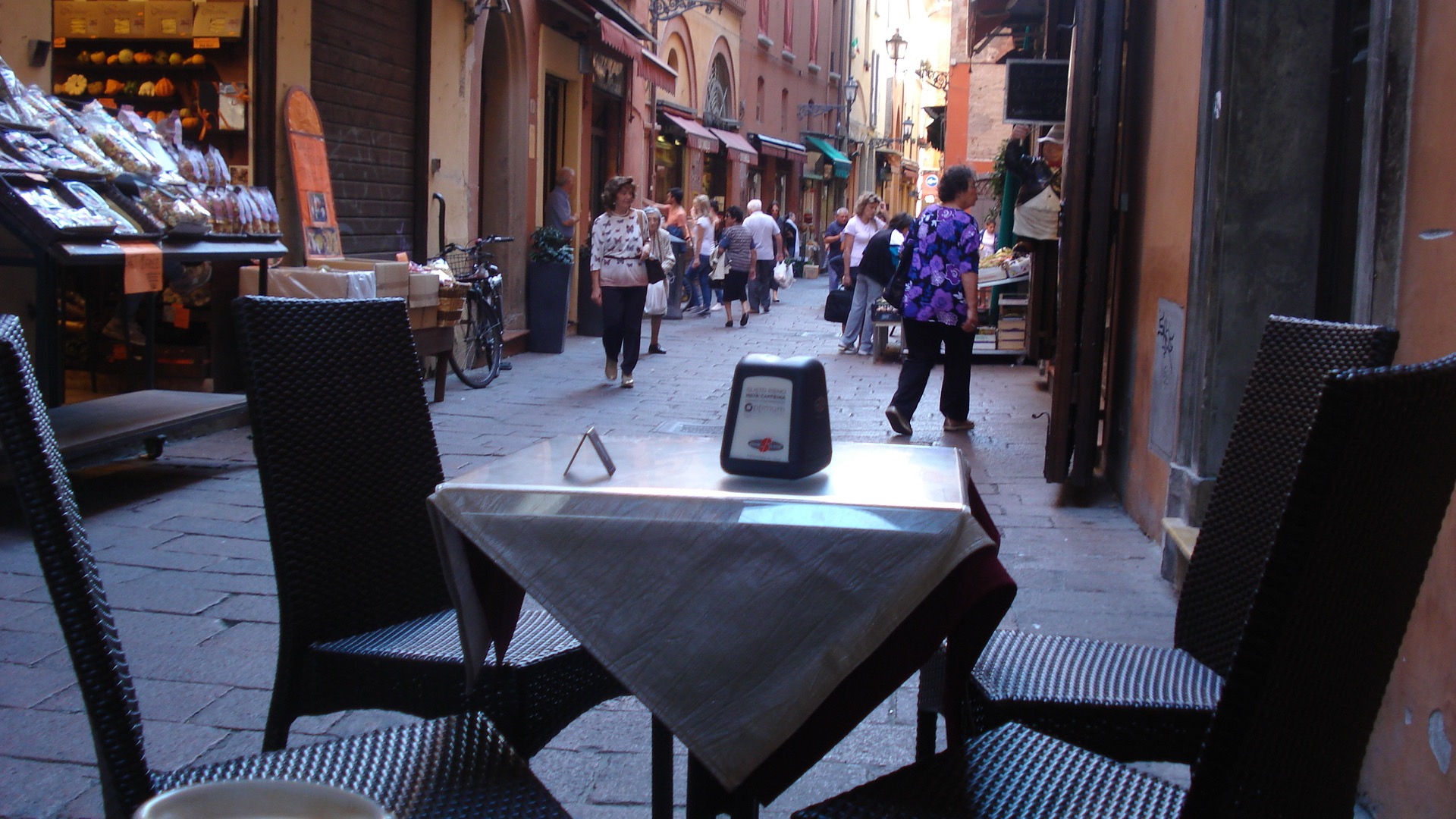
The most fun thing we did on our trip was spend one day on a tour of food factories in the surrounding neighborhood of Bologna, actually in nearby Modena. Beth found the guy that ran the tour on line, with positive reviews that were out of sight. He was considerate, funny, charming, informative and supremely entertaining. Vans picked up the guests at our hotels and took us to the first “factory,” a small place that made the highly controlled and best parmesan cheese in the country—Parmigiano Reggiano. We donned our protective caps and gowns and saw how they started with milk and first made curds and then a large ball of cheese and then the cheese wheels. We learned how the wheels were aged and viewed the aging rooms. We learned how they tested for quality cheese, without air bubbles and flaws. And then we got to taste cheeses that were aged for different lengths of time. This was not the parmesan cheese I am used to and that I put on spaghetti. This stuff had a flavor and texture beyond anything we had experienced. Of course we bought a big hunk that was shrink wrapped and brought it home with us.
Next we went to a “factory” that made Balsamic Reduction. I can no longer call this vinegar. This was truly a cottage factory and was housed under the rafters in an old farm house where the family had been making this stuff in the same wooden barrels for many generations. Only grape juice and mash from certain grapes were used--no other ingredients and no vinegar. The mash was allowed to age in the heat of the rafters for 12 years (minimum) and some of it for 35 years. They used a complicated system of transferring the stuff from larger barrels to smaller barrels as the stuff was reduced over time. In the end, the product was a thick, dark syrup that was extremely sweet yet pungent. I think one could become addicted to it. We tried newly aged reduction, 12-year reduction, and 35-year reduction. We tried them on ricotta and also on gelato. People use the stuff on meat, veggies, cheese, almost anything except salad. It is too expensive for that. A small bottle can cost in the neighborhood of $100. We bought a small bottle of the less aged balsamic for a mere $30. In observing this process, I realized that the family could not possibly make much money. This production is done out of love and tradition.
Our last “factory” was also in a home. We witnessed the processing and aging of prosciutto, again that which was claimed to be under the strictest control and of the highest standards in the country. Every day, a truckload of hams from local Modena pigs that had been fed a controlled diet are brought in to start the aging process. In refrigerated rooms, they are salted and left to soak it in. After some time, they are washed and hung up to age for months and then eventually coated with some fat or lard before aging some more. The company also processes hams for local residents who keep a few family pigs. We saw some of these hams, which were much larger than the regular commercial hams. According to our guide, the reason is that the locals feed their family pigs all their table scraps, and the pigs get to be real “porkers”—no controlled diet here. And once again, we got to taste the product. This prosciutto was unlike any I had ever tasted before: it melted in your mouth with flavor. Unfortunately, the US government will not allow us to bring in any meats. So we didn’t buy any.
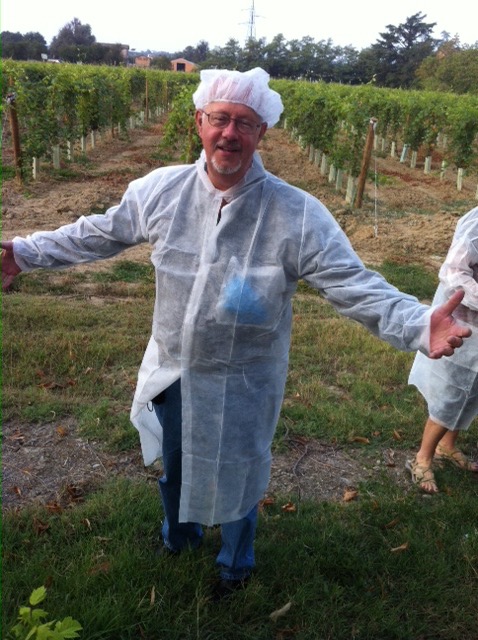
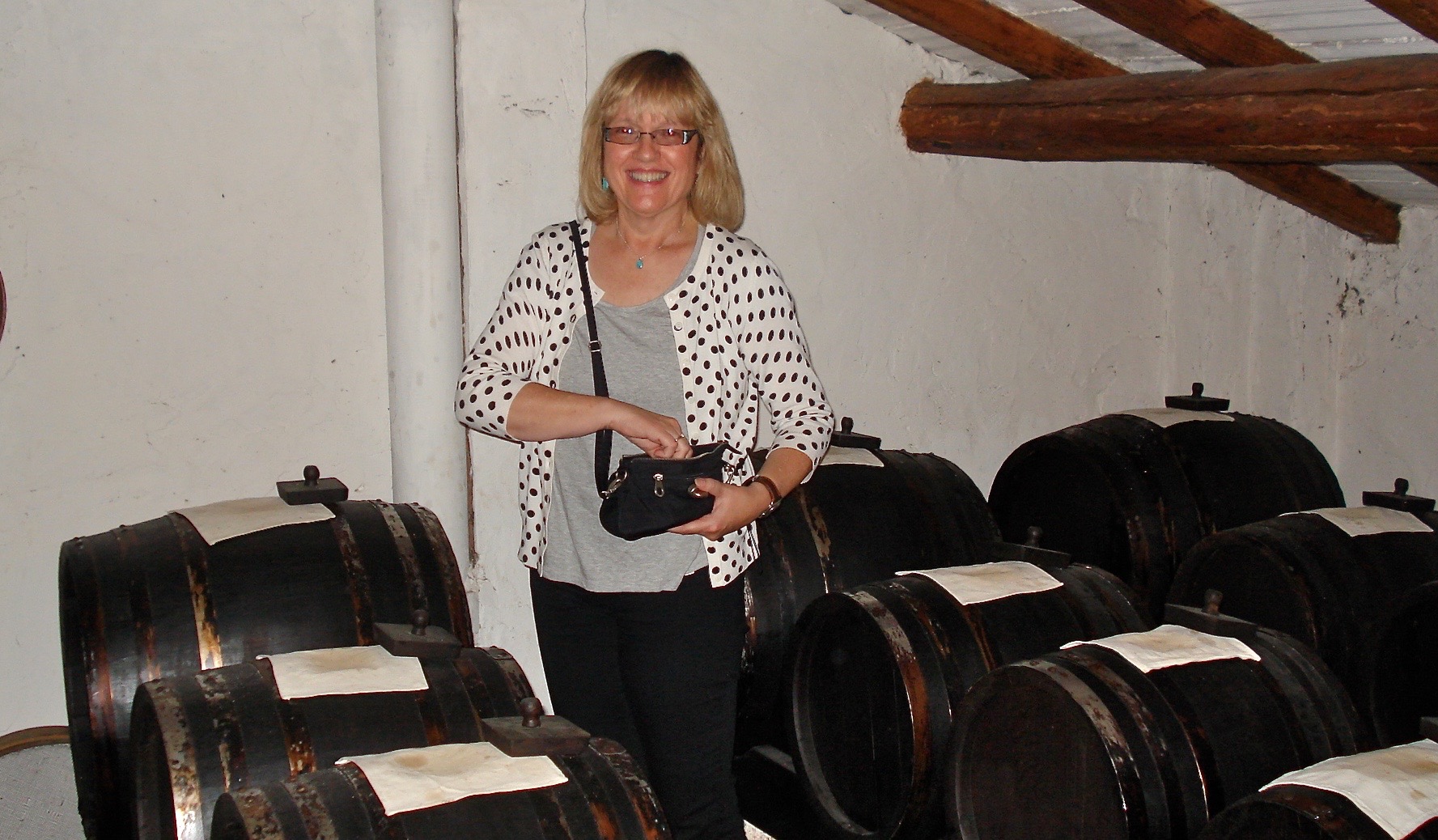
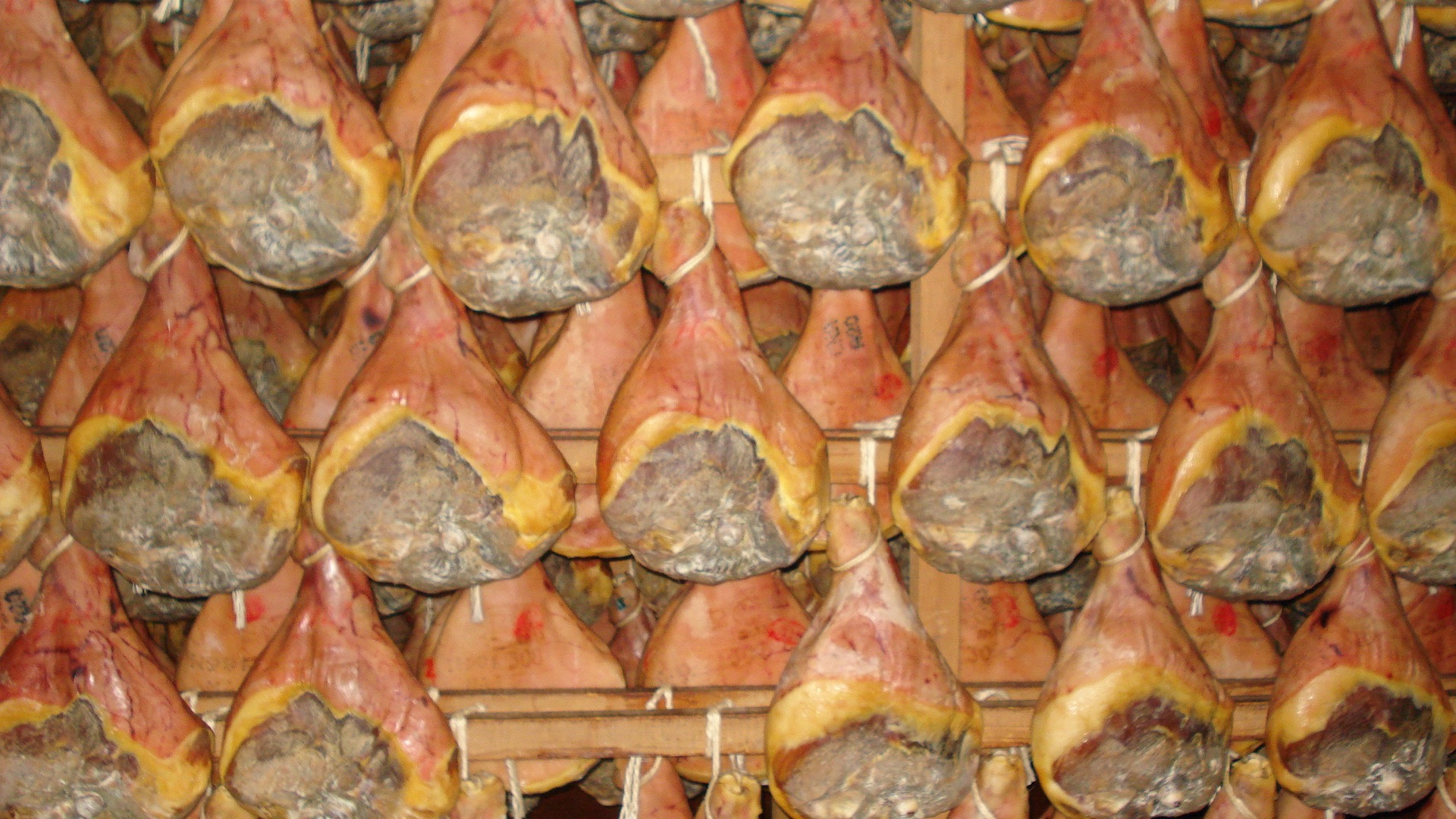
I might add that I have always liked touring factories, but it occurs to me that, just as the factories we toured in Modena, all the factories we have toured in New England have been food related: a sardine canning factory, Cape Cod potato chip factory, Cabot’s cheese factory, Ben and Jerry’s ice cream, and Stonyfield yogurt, as well as maple sugar houses. Admittedly when I say I like factories I am not thinking of a factory that makes washing machines or fan belts. However, I think on our next trip to Italy we might branch out and visit the Ferrari, Maserati and Lamborghini factories—a change from food to speed.
During our factory tours, our guide would tell us how much time it would take to drive from one place to another. Sometimes he would say, “It will take 10 minutes in German time.” Sometimes, “It will take 20 minutes in Italian time.” You can guess what the difference was between German and Italian time.
At the end of our food factory tour, we were taken into the hills surrounding Bologna for a late lunch at a little café. The café was little, but the lunch wasn’t. The lunch consisted of three kinds of wine in order, gas (sparkling) water, antipasto of cheese and meats, three kinds of tortellini in order, and then the main course of veal, rabbit, pork and boar (what was the difference?). This “entrée” I believe must have been the Italian version of turducken. For dessert we had pastries in cream and fruit. The food was excellent, but there was so much. That was where we learned the extremely valuable Italian word “Basta,” “Enough.
The Conference
Since our primary purpose in visiting Bologna was to attend the creativity research conference with the Marconi Society, I should mention something about it. For three full days we attended a string of research reports and theoretical talks about creativity given by people from around the world. As is the case at most research conferences, a good many presentations were unclear or trivial at best, but they were interspersed with thoughtful and valuable presentations. I think that Beth’s talk regarding the pitfalls in developing a unified, systems theory for understanding the development of creativity was excellent. We did meet for the first time several researchers, particularly one from Denmark and a group from Australia, who had read Beth’s work (as she had read theirs). That is probably the most important value of such conferences. Now we have made connections that will continue and will probably result in visits with each other and collaborative research. I also learned that the pioneering work that Teresa Amabile and Beth have done on intrinsic motivation and creativity and also on the use of the Consensual Assessment Technique of measuring creativity are now widely accepted and used by others, as was evident at the conference. However, by the end of three days of continuously sitting through these presentations, I had entered a near stuporous state
We also heard presentations by some of the stars of telecommunications. We also learned about Marconi himself. Before he succeeded in making the first wireless broadcast across the Atlantic in 1901, he had been experimenting with wireless telecommunication for some time. His first success was sending a Morse Code signal across his kitchen. Well, you have to start somewhere. From there it seems that it was just a matter of finding the technology and power to increase the distance. Think of what that breakthrough has meant—radio, TV, and eventually mobile phones and The Cloud. Perhaps the most moving presentations were by Martin Cooper, this year’s recipient of the Marconi Prize, who was honored at the final award ceremony as the visionary inventor of the first mobile cell phone for Motorola in 1973 (pictured here with that early phone--how clunky was that?).
Think how he must feel walking around everyday and seeing virtually everybody using the latest version of the devise that he invented. Two other impressive speakers were Vint Cerf, who along with Robert Kahn invented the Internet (sorry, Al Gore, your name did not come up), and David Payne who developed the fiber optics used today for the massive, high speed transmission of data. Three impressive creators and inventors, wouldn’t you say? In many ways, these creators at the conference were more interesting to listen to than the researchers who study the creative process.
And so, sadly, it was time to go home. But we needed gifts for our two sons, John and Ethan. I suggested that we bring each of them a cute, Italian girlfriend, of which there were many. Beth said that my comment just showed how stupid and immature I was. But I take issue with her opinion; I don’t think I am stupid. So, in the end we just got them T-shirts (not too creative). We did also bring them each a poster of a beautiful Lamborghini. For our own gifts we brought home cheese, Balsamic reduction, an obscene amount of Italian chocolate, Marzipan and cookies, and some freshly baked German Schwartz Brot (my favorite bread in all the world), which we picked up at a bakery in the Frankfurt airport just before leaving. Beth also bought a beautiful Italian skirt, and I bought a beautiful etching of the Two Towers, which we found in a small, out-of-the way shop where we were able to talk to the artist and see the press she used. So now we can say, along with all the others, “We want to go back.”

